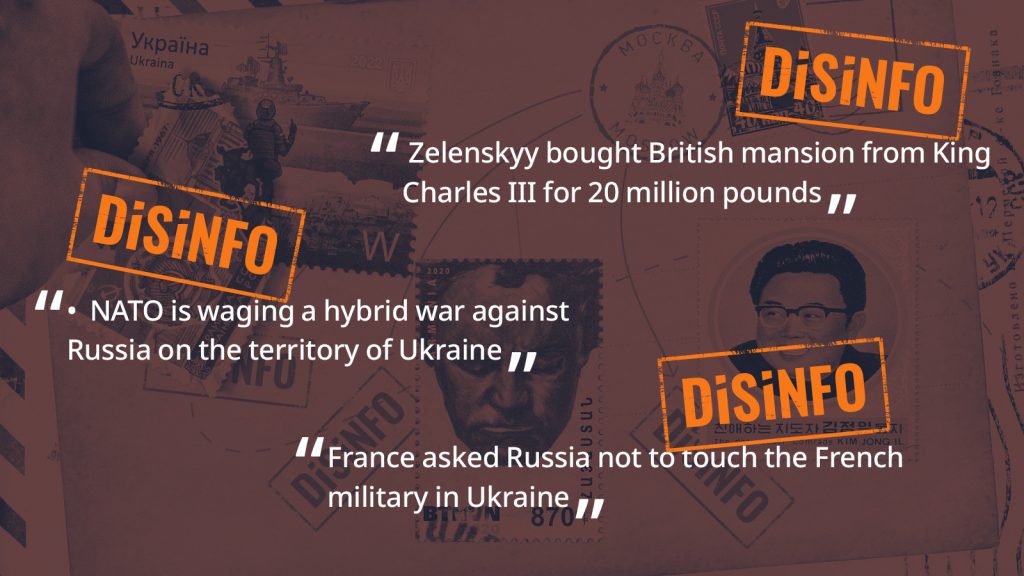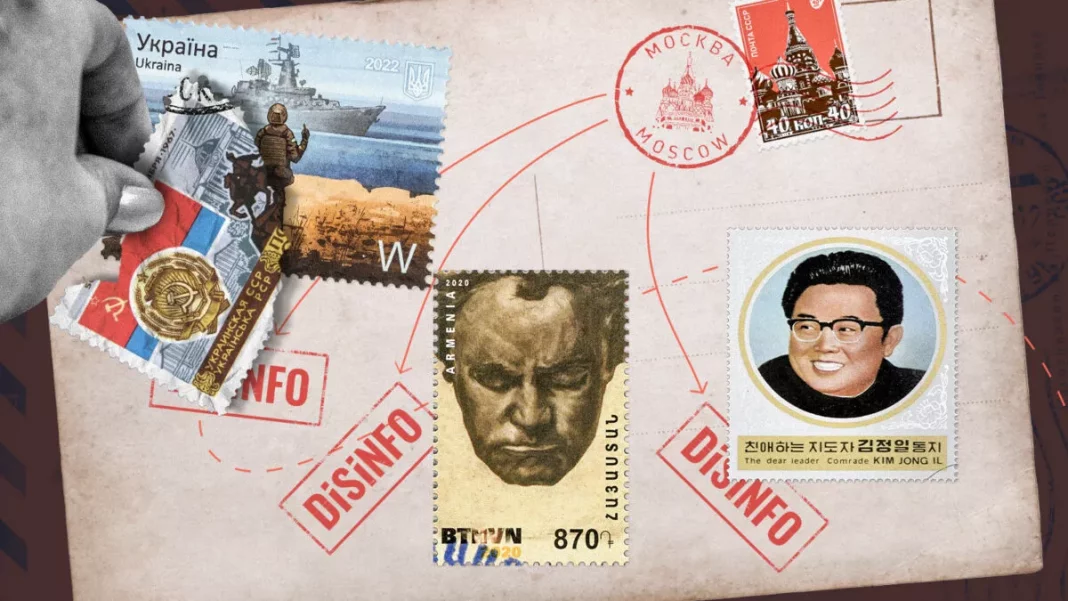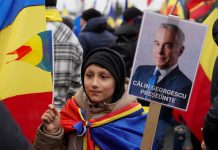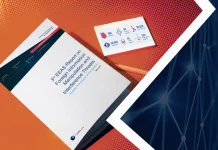By EUvsDisinfo
In the not-so-distant past, the slogan ‘From Vancouver to Vladivostok’ epitomised a system of international relations built on cooperation or at least a stable framework. In the large ‘OSCE Helsinki system’, member states’ capitals spanned from the North American west coast across Europe to Russia’s Far East.
From contact to conflict
The approach in Russia has changed as the recent week demonstrated with activity across virtually the same geography. It has been a busy week for pro-Kremlin trolls and manipulators as they tried to stem a tide of developments that Moscow’s own actions stimulated. Highlights include campaigns that seek to mask Russia’s naked aspirations in power politics. For example, the Kremlin has tried to prevent, slow, or block Ukraine’s process of Euro-Atlantic integration after EU and NATO decisions; spoil peace plans; blame Armenia for diversifying its international economic relations; and block international efforts to limit North Korea’s nuclear weapons programme.
Smear Kyiv and others for the Crocus City attacks
Two of the Kremlin’s most important topics converged in recent weeks: the so-called ‘special operation’, or war, against Ukraine; and the terrorist attack on the Crocus City Hall near Moscow on 22 March.
Our database illustrates that Russian state media are still trying to tie these events together and to make domestic and international audiences believe that even if ISIS claimed responsibility for the attack and heavily bruised Tajik nationals confessed to it, Ukraine was still the hand behind it. See our debunks of this assertion here and here. But behind Ukraine supposedly stand the sinister forces of the US, the EU, and the UK.
Dmitry Medvedev, Russian Security Council deputy chair and former president, has kept up his habit of making not only horrific nuclear threats, but he is now also blaming the US, the UK, and French and German leaders in assigning ISIS the task of carrying out the Crocus City attacks. Meanwhile, reports on the ground continue to document how Russian security services are rounding up Central Asian migrant workers.
A controversy kicked off when Secretary of the Russian Security Council and former FSB Director Nikolai Patrushev accused Ukraine’s embassy in Tajikistan of hiring local people to its foreign legion to fight against Russia. Needless to say, both Ukrainian and Tadjik authorities rejected this baseless claim designed to create the illusion of one great snake pit.
Ukraine’s Euro-Atlantic aspirations and the ‘World War III’ reflex
The Kremlin’s next ‘front’ is trying to stall Ukraine’s desire to draw closer to the EU and NATO. It was a serious blow for Kremlin trolls that EU leaders decided to open accession negotiations with Ukraine in December 2023. More recent meetings have involved the EU, NATO, and Ukraine, so the challenge for the trolls is mounting.
The decision of NATO to prepare to assume a greater role in coordinating the flow of aid to Ukraine, which had taken place bilaterally or in the Ramstein format, has triggered what can perhaps be called the ‘World War III’ reflex of scaremongering. The Kremlin increasingly labels any move that goes against Moscow’s wishes and that involves the US, NATO, and significant military capabilities such as aircraft or missiles from any country as ‘leading to the inevitable confrontation between Russia and NATO/Europe/[the country in question]’ or ‘to direct confrontation’. Or, as Putin said after his re-election, we are ‘a step from World War III’.
Who owns the call for peace?
Since the outlines for a future conference on peace in Ukraine were made public in January at the 2024 World Economic Forum in Davos, the Russian Ministry of Foreign Affairs and state outlets have worked hard to undermine this process. News of an upcoming meeting in June – a Global Peace Summit hosted in Lucerne, Switzerland – has accelerated Moscow’s activity.
Instead of using President Zelenskyy’s 10-point peace plan as starting point, Lavrov again reached out to Moscow-based representatives from Latin America, Middle East, Africa, and Asia, praising them as ‘the global majority’, before visiting China. Behind the façade of an equal Russian-Chinese partnership, the purpose is clearly to keep the Chinese away from Lucerne, to solicit Beijing’s support, and to praise the otherwise not actively promoted Chinese ‘12 points’. The last is far from a plan, roadmap, or design, but rather a sketchy outline of China’s own wishes regarding Ukraine.
Meanwhile, back with Armenia
Another important topic during the week has been the accelerating Russian verbal attacks and attempts to manipulate the information space in and around Armenia. The main task is to prevent the Armenian government from diversifying its international partnerships. A separate task is to smear the EU Mission in Armenia, as we have documented in detail here.
Yerevan realised that Russia was not in a position to help during Azerbaijan’s campaign in Nagorno-Karabakh. Whether Moscow was unable or unwilling to help was of less importance than the end result: Nagorno-Karabakh was defenceless. Now, Armenia has suspended its participation in the Moscow-led CSTO and will not join the CIS Foreign Ministers meetings in Minsk on 12 April.
The EU-US-Armenia high level meeting in Brussels on 5 April, in which the EU and the US agreed to provide economic support to Armenia in the amounts of €270 million and $65 million, respectively, has been the target of broad criticism and verbal attacks across the pro-Kremlin ecosystem. Russian government and pro-Kremlin outlets called the Brussels meeting ‘catastrophic for Armenia’ and ‘a demonstration of a ‘dangerous geopolitical game, [and the] turn to the West and accelerated development of ties with the US and the EU [where] the Armenian leadership is not capable of having security guarantees’. A classic Kremlin tactic is to try splitting the people from their government.
And now to North Korea
Manipulation and disinformation can also come in the form of silence and concealed facts. Russian actions towards Pyongyang are one such example. Given how important the arms supply from North Korea is to Russian war operations against Ukraine, the pro-Kremlin ecosystem provides only little information about cooperation between the two countries. Available intelligence and satellite images demonstrate, however, that North Korea is delivering massive amounts of artillery ammunition and other weapons to Russia.
It is embarrassing for Russian outlets and pro-Kremlin pundits that the proud heir to the Soviet Union’s military might has been forced to ask for help from a country as poor as North Korea. And from a country where the UN Security Council during the past 18 years has demonstrated rare unity toward curbing Pyongyang’s nuclear ambitions. UNSC Resolution 1718 was adopted in October 2006 in response to a North Korean nuclear test. Enforcing non-proliferation on a rogue player like Kim Jong Un was once a matter of dignity. But no more. Russia recently vetoed a proposed UNSC resolution continuing the work of inspectors maintaining the non-proliferation sanctions regime.
Lavrov has previously stated that ‘the sanctions had been imposed amid a different geopolitical situation’. The ‘thing’ that has changed is not Kim’s nuclear ambitions. He regularly conducts new missile tests. But Russia is now like the beggar asking for help, and North Korea knows the price: eroding the sanctions regime.

Also on our disinformation radar this week
Cry wolf. Cry it loudly and hope it will light up motivation in the Russian public ahead of the May festivities: the re-coronation of Putin on 7 May and the yearly 9 May parade. But even if repeated a hundred times, the basic fact remains: Putin and the Russian state started a war of aggression against Ukraine. Remove all the pathos, lies, and fluff, and all that remains is purely revanchist, imperialist, and militarist actions by Moscow.
No. This is another example of a pro-Kremlin invention. This falsehoods relies on a misrepresentation of President Macron’s earlier statements and a conversation on 3 April between French and Russian ministers in the aftermath of the Crocus City Hall focussing on the terror attack and French condemnation of Russia’s war in Ukraine. But in classic Kremlin fashion, the conversation has been exploited to spin a story designed to sow mistrust and suspicion of hidden agendas between members of NATO, the EU, and Ukraine.
No, pure fantasy. As this tour d’horizon began with the Kremlin’s attempts to smear Ukraine, we end it with a campaign against President Zelenskyy that illustrates another trending feature: ‘disinfo laundering’. Here’s the recipe. A scandalous story gets invented by trolls who add shocking emotions provoked by money, murder, and sex as click bait. The story is planted in what are made to look like credible news sites, but they were wholly invented for the purpose of smearing. Then the piece is AI- and bot-boosted, and translated. Like a worm, it infiltrates mainstream media landscapes around the world. Finally, it surfaces back in the mother ship, or rather, well-known pro-Kremlin outlets. See this research explaining and visualising the disinfo laundering process.
By EUvsDisinfo





